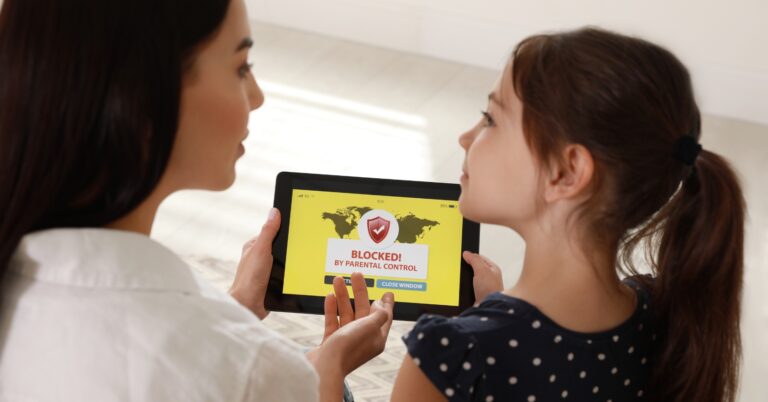In today’s digital age, apps like Wishbone offer a unique platform for social interaction, enabling users to post side-by-side images and seek opinions on anything from fashion choices to favorite celebrities.
This engaging format not only fosters community among friends and strangers alike but also mirrors the functionality of popular social networks, allowing users to follow one another and explore profiles.
However, beneath its surface of entertainment and connection lies a potential for misuse, particularly concerning inappropriate content and cyberbullying, posing significant risks to its predominantly young audience.
1. What Makes Wishbone Appealing?
Wishbone captivates its audience with a simple yet powerful premise: comparison. This straightforward concept has broad appeal, engaging users in a dynamic way that goes beyond passive consumption.
By facilitating discussions and expressing preferences on a wide range of topics, Wishbone taps into the human desire for interaction and opinion sharing.
Its user-friendly interface and the immediacy of feedback on comparisons contribute to its popularity, especially among younger demographics seeking instant social validation and engagement.
2. The Social Aspect
The app’s design emphasizes social connectivity, allowing users to build a following, interact with friends, and discover new connections through mutual interests. This aspect of Wishbone is crucial for fostering a sense of belonging and community.
However, it also introduces the need for critical awareness about online interactions and the importance of curating a positive digital footprint, as these connections can significantly influence users’ social experiences both within and outside the app.
3. The Comparison Feature
Central to Wishbone’s appeal is its comparison feature, which engages users by presenting two choices on virtually any subject. This not only stimulates engagement through the expression of personal preferences but also encourages users to consider their values and tastes in relation to the broader community.
While this feature promotes engagement and learning, it also necessitates a discussion on the importance of respectful and thoughtful participation, especially given the platform’s potential for comparison to spill over into personal judgment.
4. The Dark Side of Wishbone
Despite its engaging and interactive nature, Wishbone harbors risks stemming from its open-ended content sharing and lack of moderation.
The platform’s inability to effectively flag and filter inappropriate content exposes users to potential harm, underscoring the critical need for vigilant content monitoring and digital literacy.
5. Inappropriate Content Concerns
The absence of a robust content moderation system within Wishbone presents a significant challenge, allowing for the unchecked spread of explicit material.
This poses a particular risk to younger users, who may encounter inappropriate content inadvertently, highlighting the urgent need for mechanisms to protect users from such exposures.
6. The Risk of Cyberbullying
Moreover, the app’s comparison-driven framework can unfortunately be twisted into a tool for cyberbullying, with users potentially using the platform to compare individuals in a manner that could be harmful or demeaning.
This misuse underscores the importance of fostering a culture of empathy and respect within the app, urging both developers and users to take proactive steps against such behavior.
7. The Impact on Young Users
The allure of social media, combined with the competitive nature of comparison, can have profound psychological effects on young users.
The pressure to be perceived favorably, along with the constant exposure to comparison, can exacerbate feelings of insecurity and inadequacy.
This calls for a concerted effort to educate young users about the value of self-esteem and the superficial nature of many online interactions.
8. Social Media Pressure
The dynamics of Wishbone amplify common social media pressures, pushing users towards a relentless pursuit of approval and acceptance.
This environment can lead to an unhealthy obsession with likes and comparisons, emphasizing the need for a balanced approach to social media use that prioritizes real-world relationships and self-acceptance.
9. The Importance of Digital Literacy
In navigating the challenges presented by Wishbone, digital literacy emerges as a critical tool.
Educating users, particularly young ones, about the risks associated with online platforms and encouraging responsible use can significantly mitigate these risks.
Parents and guardians play a crucial role in this educational journey, guiding their children through the complexities of the digital world with empathy and understanding.
Wishbone: A Tool for Connection or Division?
While Wishbone offers significant opportunities for connection and learning, its potential for misuse raises questions about its overall impact on social interactions.
The platform reflects the broader dilemmas of the digital age, balancing the benefits of connectivity against the risks of exposure and misuse.
The Power of Positive Use
Focusing on the positive aspects of Wishbone can help shift the narrative towards a more constructive and enriching experience.
By leveraging the platform for educational purposes, cultural exchange, and genuine connection, users can counteract the negative aspects and cultivate a more positive online community.
FAQs
1. How can I ensure my child’s safety on Wishbone?
- Open Dialogue: Start with an open conversation about the app, discussing its features and potential risks. Encourage your child to share their experiences and concerns.
- Privacy Settings: Review and adjust the app’s privacy settings together to ensure your child’s account is set to the highest privacy level, limiting who can see their comparisons and interact with them.
- Regular Check-ins: Make it a habit to periodically check in on your child’s activity on Wishbone, not to invade their privacy but to ensure they’re using the app safely.
- Educate on Content Sharing: Teach your child about the importance of thinking before they post, emphasizing that everything shared online can have a lasting impact.
2. Is there a way to report inappropriate content on Wishbone?
Yes, Wishbone typically offers a mechanism to report inappropriate content directly within the app. Users can usually find an option to report or flag content that violates the app’s community guidelines. This feature is intended to alert moderators to potential issues, allowing them to review and take necessary actions, such as removing content or banning users who violate terms of service.
3. Can Wishbone be used educationally?
Absolutely. While primarily a social comparison app, Wishbone can be leveraged educationally with a bit of creativity. For instance, teachers or parents can use it to create engaging polls or comparisons related to educational content, such as historical events, literature, scientific theories, or art. This not only makes learning more interactive but also helps students understand popular opinions and encourages critical thinking.
4. How does Wishbone handle cyberbullying?
Wishbone, like many social platforms, has community guidelines that prohibit bullying and harassment. The app provides users with tools to report bullying incidents or offensive content. Upon reporting, the Wishbone team reviews the content and can take actions like removing the content, suspending, or banning the offending accounts. It’s important for users to report any instances of cyberbullying to help maintain a safe and respectful community on the app.
5. What measures can parents take to educate their children about safe online behavior?
- Lead by Example: Demonstrate positive online behavior in your own social media use.
- Set Boundaries: Establish clear rules for online behavior and app usage, including time limits and restrictions on sharing personal information.
- Digital Literacy Education: Teach your children how to evaluate online content critically and recognize the signs of cyberbullying or inappropriate content.
- Encourage Open Communication: Make sure your child feels comfortable coming to you with any online issues or questions they may have.
- Utilize Educational Resources: Take advantage of online safety resources and tools designed for parents and children to learn together about navigating the digital world safely.
By taking these steps, parents can play a crucial role in safeguarding their children’s online experiences, making platforms like Wishbone a more positive and secure space for them to explore.














